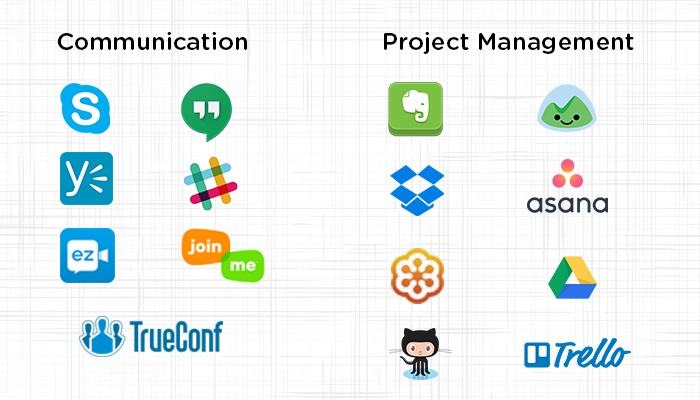Hiring the right talent for the right job has always been a big challenge for Small and Medium Businesses (SMBs) due to various factors such as limited brand recognition, lack of resources to find the right talent and inability to handle financial blows. This makes it difficult for SMBs to take up big projects, leading to a loss of revenue.
There are quite a few outsourcing companies in the market who claim to help unique SMBs like yours, address this issue, but their attention and solutions are more of one-size-fits-all or based on a model that is best suited for large enterprises.
Apart from this several issues such as lack of authenticity, inadequate transparency, unusual communication patterns, etc. plague the outsourcing business.
Hiring virtual employee(s) can be a highly efficient alternative to all of this. Many SMBs are now moving to this model as it provides the necessary flexibility for your critical projects. It’s a mix of both the outsourcing and freelancer world and thus helps you reap serval benefits.
Below are a few important reasons why startups and SMBs prefer the virtual employee model.
1. Sizeable cost-saving -
Did you know that on an average, just the process of recruitment to hire an in-house developer will cost you anywhere between $10,000-$30, 000? Let alone that, the cost of hiring experienced employees is even higher. Apart from this, there are various training costs involved to upskill your in-house resources to match the level of your projects. Besides, hiring in-house employees demands a good infrastructure and a sizeable spend on retaining them.
Although hiring a freelancer may seem as a cost-effective alternative to all this, remember that there may be several hidden costs that you may have to incur occasionally, besides they may not be trained on technologies as per the requirement of your project.
With virtual employees the costs of hiring, training, retention and infrastructure are almost nullified. On the other hand, you get technology expertise across verticals at different costs, making it a highly cost-efficient model. You only pay for the cost of a developer and rest of the cost is well shared across multiple projects. This makes it possible for such organizations to pass on that benefit to SMB’s.
2. Dedicated Resources -
Task focus, full control, flexibility, efficiency and speed are some of the most obvious advantages of having a dedicated team working on your project, but what isn’t obvious is their dedication. When you hire a freelancer, you usually do not have the assurance that the freelancer is dedicatedly working on your project only. Whereas with outsourcing companies, you rarely have direct access to the team that is working on your project which leaves you in the dark about where your project is headed.
In contrast, with the virtual employee model, you have direct access to the developers working on your project. Such companies employ various task tracking mechanisms such as daily stand-up meetings, tracker sheets, and sharing of ideas through blogs, ideas diary etc. These mechanisms help the client keep a track of their project on a day-to-day basis.
Also, you have the assurance that your virtual employees will work on your project for a minimum of 40 hours a week, even while you are asleep. This implies that your project is being worked on around the clock by developers dedicated just to your project. This, in turn, reduces your time-to-market, a big plus in today’s age of rapidly changing market environments.
3. Assured Quality -
As a company with limited resources, you can’t afford to make expensive mistakes. Neither can you afford to waste time on trials and errors or multiple iterations and rework. Hence opting for a virtual employee company that gives you access to certified developers is a much better alternative to opting for a freelancer.
Such companies, (CMMI level 3 & above) have a proven track record of having served numerous clients over years with clearly defined, matured processes, transparent delivery and efficient project management practices. They also have pioneering partnerships on key technology areas such as Microsoft, Acquia, Drupal, Kentico, MongoDB, Shopify which help them leverage latest in these technologies and deliver smart, customer-centric solutions.
Additionally, their developers have an experience of working on several projects across technologies which helps them to get in control of the project entirely and solve any technical glitches as and when they arise. Above and beyond, the developers’ KRAs are directly linked to the client’s rating. This coupled with the best practices & coding standards they follow also ensure a high-quality delivery
Moreover, these companies also follow stringent IP protection measures so you can rest assured that your project is in safe hands.
4. Seamless communication -
In situations where you and your team don't share the same physical space, you need to have an effective communication channel in place. Both at a project management level and individual communication level as well as on a cultural level. Ideal virtual employee companies imbibe a culture of transparent communication and innovation which is usually missing in other forms of outsourcing models. This transparency in processes is maintained through mechanisms such as time-sheets, blogs and standard checklists and various collaboration tools such as slack, skype, hangout, Github, yammer, etc. They also work with several companies across geographies making them aware of the cultural sensitivity as well.
Besides, opting for an Agile partner equips you with additional benefits that ensure efficient collaboration, communication, and transparency in the organization. Agile project management tools such as Jira, MS projects, Asana, Basecamp, etc. further enable efficient collaboration and communication.
In contrast, communication processes in other models such as freelancing are rarely well-organized.
5. Unmatched flexibility -
Most outsourcing companies work on the fixed priced model which makes it very difficult to make any changes on-the-go to your project and run through the complete “Change Request Cycle” at an added cost. In addition, scaling up and down of the team in a single plan and restrictions on direct communication with the team makes it an uphill task.
The virtual employee model is practically an extension of your own team thereby giving you a complete control of your project. In this arrangement, you get direct access to the developers working on your project, just as you have access to your own team. Easy ramp up and ramp down of developers based on your project requirement, and a quick option to upgrade your team from an array of technology skill sets form the basis of this model. The kind of convenience and flexibility that this arrangement provides is unmatched by any other outsourcing arrangement.
Below is a snapshot of the benefits that you can derive from this model, in comparison with other models.
It’s imperative that the virtual employee model is one of the best-suited models for your critical projects in today’s world of ever-changing technology. However, choosing the right partner which can provide virtual employees is altogether a different ball game.








.jpg?width=818&height=1249&name=column%20(1).jpg)


